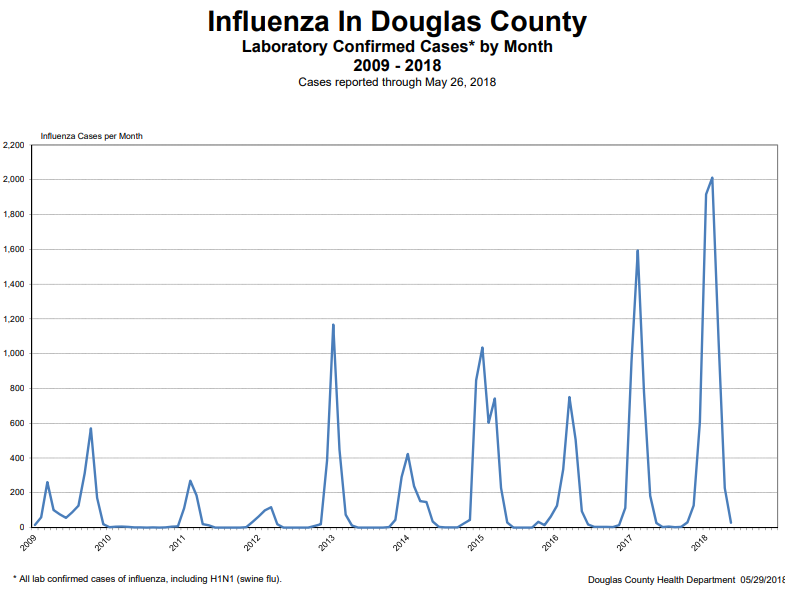2018-2019 Flu season approaches
November 7, 2018
According to the Centers for Disease Control and Prevention (CDC), last year’s flu season was the worst recorded with a record-breaking number of hospitalizations and several deaths.
Approximately 80,000 Americans died of flu and its complications last winter.
This year’s flu season has turned out to be so intense that the number of people seeking care at doctor’s offices and emergency rooms is almost as high as levels reported during the peak of 2009-2010 swine flu pandemic according to Lena H. Sun of the Washington Post.
This flu season has started early, as profound flu activity blankets the entire country. The season lasts between October and late April or May, peaking from December to February.
In Tallahassee, Florida, health officials disclosed a report on an unidentified child being the first to die amidst this year’s flu season. The Florida Department of Health’s Bureau of Epidemiology reported that the child tested positive for influenza B, dying between September 30 and October 6. The child was not vaccinated.
H3N2, the predominant strain of the 2018-2019 flu season, is a subtype of influenza A. Each year there are variants of influenza that cause illness.
The virus mutates, making it difficult to predict which one will make people sick. Within the host, influenza populations exist as a mixture of genetically diverse virus particles. The diversity allows influenza to rapidly adapt to its environment, especially after transmission to a new host.
The flu virus evolves much more rapidly than do viruses like measles, mumps, and polio.
Regarding past flu seasons, the dominant strain H3N2 influenza A has been more severe. For example, in the 2009 H1N1 pandemic, an estimated 60.8 million cases were reported from April 12, 2008 to April 10, 2010 according to the CDC.
H3N2 has been so pervasive as in past years, there’s been little exposure to it. When the same flu strain strikes repeatedly, people and regions tend to build up immunity.
Nebraska Department of Health and Human Services recommends that schools consider offering flu vaccinations to students at school, encourage respiratory etiquette among students and staff through education, and encourage students and staff to stay home when sick.
The Department also disclaimed that the upcoming season’s flu vaccine will protect against three or four influenza viruses that research indicates will be the most common during the season.
It would include influenza A (H1N1) virus, and influenza A (H3N2) virus, and one or two influenza B viruses.
Symptoms for the virus include fever, cough, sore throat, muscle ache, runny or stuffy nose, chills, severe lethargy, and gastrointestinal discomfort. The CDC also indicates that “not everyone with flu will have a fever.”
Flu vaccines are created to protect against three or four flu viruses that are believed to be the most common during a flu season. They trigger antibodies to develop in the body within two weeks of the administration of the shot.
With a reduction in the risk of flu by 40-60 percent, vaccines are highly recommended.
The immune system protects the body from infection. When it is in tiptop shape and functioning properly, the immune system launches an attack on threats-such as flu viruses.
By implementing healthy strategies, such as, eating fruits and vegetables, frequent exercise and getting seven to nine hours of sleep each night, the immune system and body can be strengthened.
Good health habits also act as a line of defense against the flu like hand washing and disinfecting surfaces.
People with the flu can spread it to others up to about six feet away, and in a classroom full of desks less than three feet apart, the spread of the flu seems inevitable. A person may get the flu by touching a surface that has flu virus on it, followed by them touching their mouth, nose, or eyes.
Officials with the CDC state that it is “important to convey the full burden of seasonal flu to the public.”


